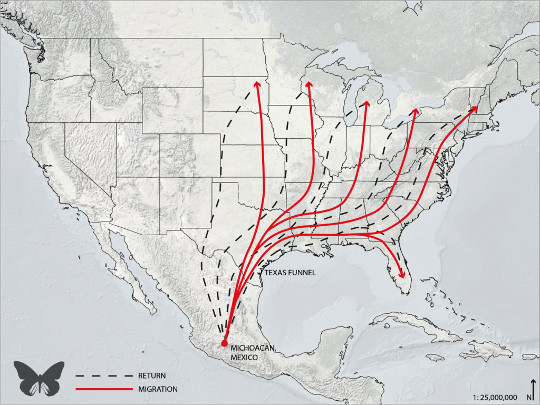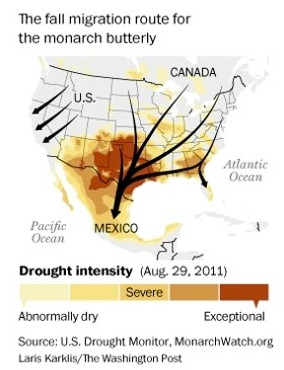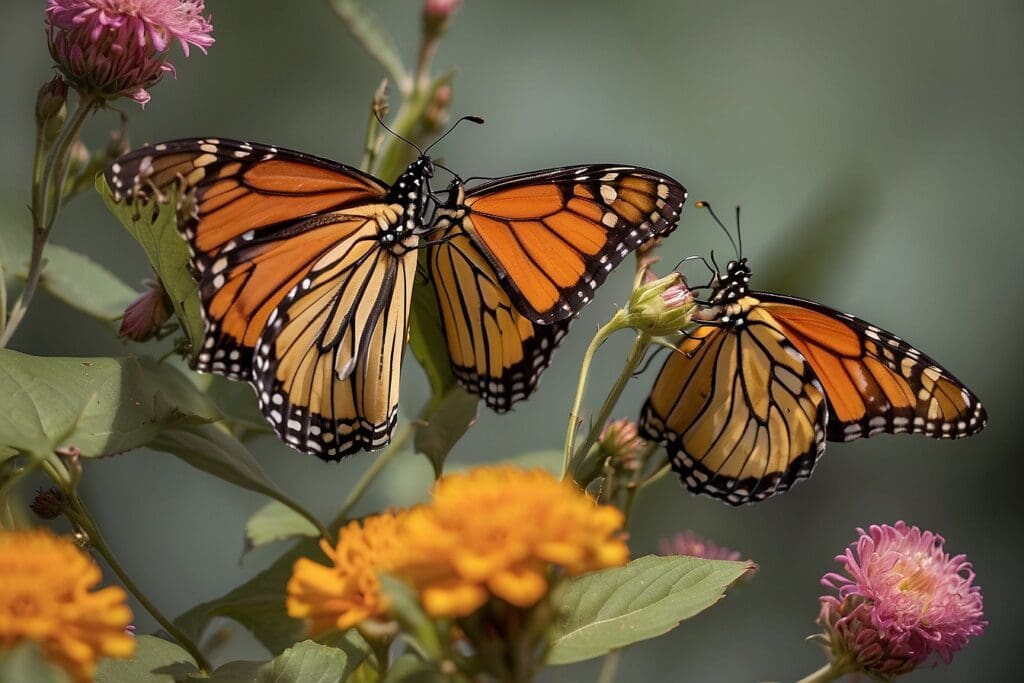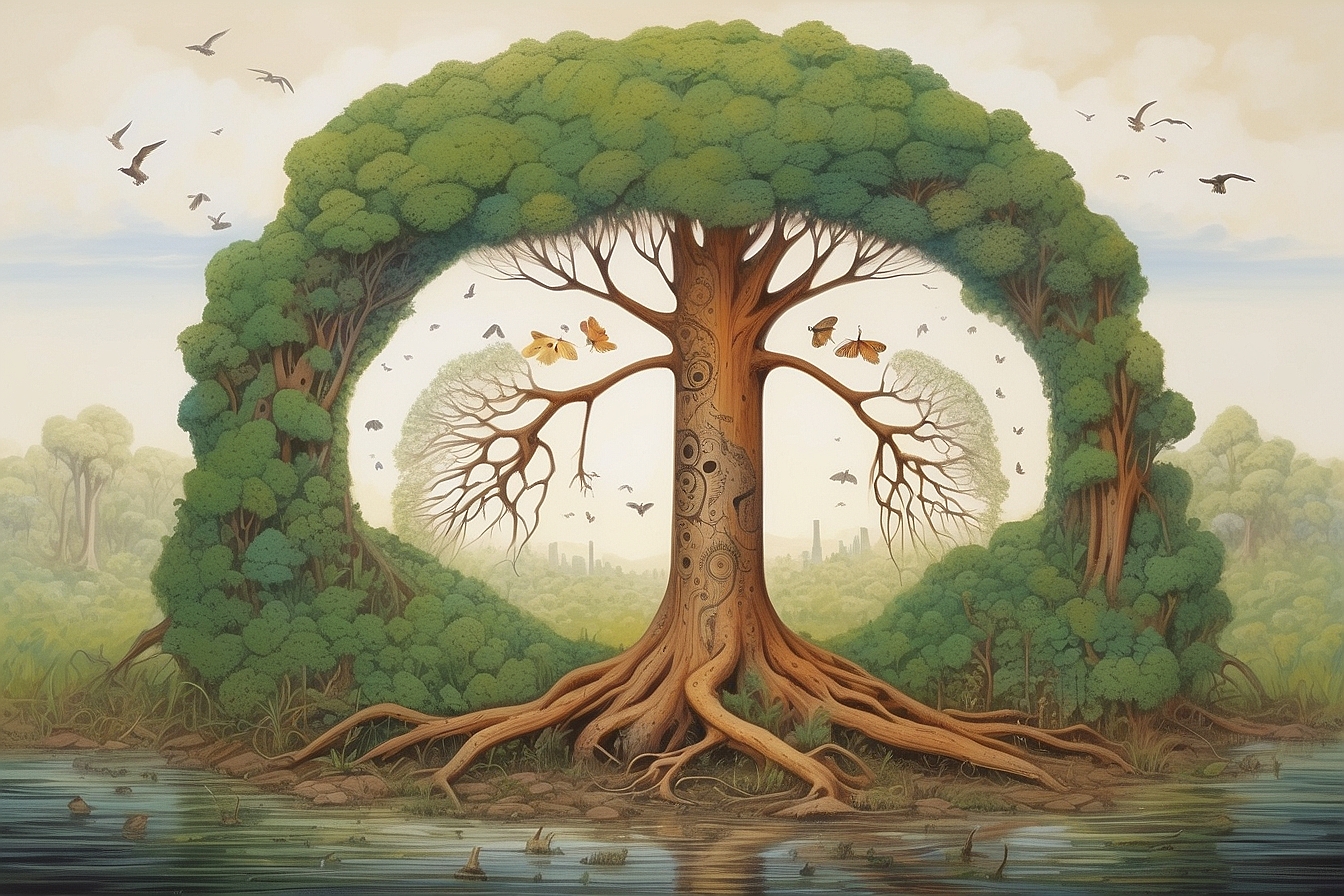In Barbara Kingsolver’s most recent book, Flight Behavior, the main character, Dellarobia Turnbow, happens upon what looks like a valley of trees on fire. Later she learns that the trees weren’t ablaze after all, but that 15 million monarch butterflies have settled in her area of the woods. Here is a beautiful excerpt relating the initial view of this scene:
Nearly all the forest she could see from here, from valley to ridge, looked altered and pale, the beige of dead leaves. These were evergreen trees, they should be dark, and that wasn’t foliage. There was movement in it. The branches seemed to writhe…Brightness of a new intensity moved up the valley in a rippling wave, like the disturbed surface of a lake. Every bough glowed with an orange blaze. 1
Monarch butterflies are not usually found in Tennessee, but climate change has led the butterflies to abandon their normal overwintering migration stop in Mexico for a similarly mountainous location farther North. This change in migration routes is worrisome because if the temperature drops too far at this more northerly location, the butterflies could go extinct.2

Photo taken by Greeniacs.com staff in Goleta, CA.
Monarch Butterflies and Climate Change
Although Flight Behavior is fictional, the potential demise of the monarch butterflies is real. To understand the effect of climate changes , Monarchs may encounter fall temperature conditions in the United States that are similar to the temperatures present at their overwintering grounds in Mexico (between 4 and 11 degrees Celsius). If monarchs overwinter in the wrong place, they will be subject to adverse winter weather conditions like freezing temperatures or large storm events.6 As the character Dellarobia puts it in Flight Behavior:
It’s like they’re directed by cues that they can’t change – they have to follow the signs…it’s like if you followed the signs to the grocery store every week, and you went to the Food King. And then one day you followed the same signs exactly the same way and you ended up at the auto parts store, what would you eat?7
 8
8
Another impact of climate change on monarch migration is habitat disruption . Droughts in Texas and the southern U.S. have killed the milkweed plants that monarchs feed on, and extreme storm events have led to butterfly die offs. In 2002, for example, almost 80% of the population overwintering in Mexico was killed. Karen Oberhauser, a professor in the Department of Fisheries, Wildlife and Conservation Biology at the University of Minnesota says that the 2002 storm was “a very extreme and unusual weather event…Clearly, that kind of storm is predicted to be more common under climate change scenarios.”9 More recently, in 2011, wildfires in Texas burned thousands of miles of land that the monarchs had to pass through in order to make it to their overwintering grounds.10
 11
11
Monarch Butterflies and Habitat Destruction
Monocrop farming and clearcutting and are two additional stressors on monarch butterfly populations. To fight for the monarch’s survival, the Mexican government has turned more than 366,000 acres into a butterfly sanctuary. However, the sanctuary has not been adequately protected and since 1984 almost half of the preserve has been logged.12 On the other side of the border in the U.S., new corn and soybean plants are being genetically modified to be herbicide-resistant. Farmers now spray crop fields with herbicides to kill off milkweed. This means that 100 million acres of farmland that monarch butterflies have used for food and egg-laying habitat are now gone. In total, the butterflies are losing habitat at a rate of 6,000 acres per day in Mexico and the U.S. combined.13 Alarmingly, the winter colonies that are located west of Mexico City just measured a record low of 2.9 acres, as compared to an average of 22 acres from 1994 to 2003!14
Future of the Monarch Butterfly

At one point in Flight Behavior, the primary biologist tells a reporter: “We are perched at the top of Niagara falls, we can’t just take a leisurely swim back upstream when we get over our denial.”15 The demise of the monarch butterfly is adding to the roar as we approach the edge of the falls. We need to start paddling furiously and stop habitat destruction .





